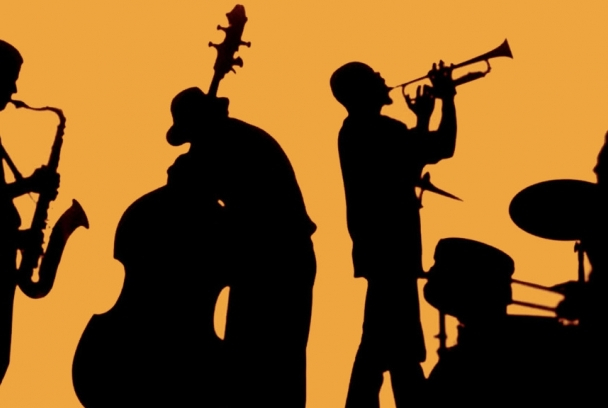DE COMO LA MÚSICA CUBANA TRANSFORMÓ LAS MANIFESTACIONES MUSICALES MUNDIALES. PHOTOS
Fue una época importante de la música popular cubana las décadas de los años cuarenta y cincuenta, estos años fueron un referente importante para las transformaciones que ocurrieron en las siguientes años y hasta el momento actual en la música mundial.
Fue un momento de tránsito, en el que paulatinamente se produjo un proceso de cambios, de transculturaciones, interinfluencias entre las distintas manifestaciones de la música nacional y la que nos llegó de diversos países por los contactos culturales resultantes de grabaciones en discos, visitas de artistas foráneos, el cine y otras. Muchos artistas casi o totalmente desconocidos en sus países hicieron carrera en Cuba, ejemplos: Lucho Gatica, Alfredo Sadel.
TRANSFORMACIONES IMPORTANTES
Es entonces cuando llega Dámaso Pérez Prado , el “Rey del Mambo”, mayormente conocido por sus aportes al género del mambo, que tiene sus orígenes en el danzón cubano y daría pauta al surgimiento y desarrollo del chachachá, así como también de la música surgida a finales de la década de los cincuenta y conocida luego, a finales de los años setenta y principio de los ochenta como salsa. No fue el creador del ritmo, que ya se tocaba en La Habana de finales de los años treinta, pero sí su mayor difusor a nivel internacional.
Perez Prado compuso tantas piezas que no les da ni siquiera un nombre sino números. El Mambo Nº 5 y el Mambo Nº 8 son las más conocidas.
Y cuando le preguntaban que quería decir mambo contestaba: “La palabra mambo no quiere decir musicalmente nada, es una palabra cubana que se usaba cuando la gente quería decir cómo estaba la situación, si el mambo estaba duro era que la cosa iba mal.”
No solo por eso será recordado Pérez Prado sino también por su forma de dirigir y expresarse hacia la orquesta con los sonidos: Uuuugh, one, two, tres, cuatro…
El proceso de cubanización culmina con la Banda Gigante de Benny Moré, en la que se observan arreglos que incluyen cambios de los planos instrumentales, debidos, a la influencia que recibió en México de la Orquesta de Pérez Prado. El repertorio de Benny Moré fue un muestrario de géneros de canto y baile representativo de todo lo que se divulgaba en la década del cincuenta: el mambo, el son, la guajira, el afro, la rumba, el montuno y el bolero.
EL BENNY MORE Y SU BANDA GIGANTE
Beny Moré fue un caso único, con precedentes en cantantes anteriores, pero nadie ha llegado a superarlo ni a relevarlo. Aún hoy generaciones de jóvenes que no lo escucharon personalmente, lo consideran el músico más popular de aquel momento y fue en definitiva, quién cubanizó definitivamente la orquesta jazz band hasta castellanizar su nombre. Pero no olvidemos el papel en ello de “Castellanos que bueno baila usted”, estelar trombonista y arreglista de la orquesta recién fallecido en Miami.
Las orquestas charangas, fueron también muy sensibles a las transformaciones ocurridas a través de estas décadas y en las que sobre todo en el piano y la flauta tuvieron papel principal, muestra son la excelencia del pianismo en Antonio María Romeu y Neno González; y de la flauta en Belisario López que fueron pioneros de lo que vendría después.
La Orquesta de Antonio Arcaño, integrada por los virtuosos: Arcaño en la flauta, Jesús López en el piano, Israel López (Concertista de la Orquesta Filarmónica Nacional) en el Contrabajo, su hermano Orestes en el cello, ambos arreglistas y compositores de muchísimos danzones, los violinistas Miguel Valdés y Elizardo Aroche y Ulpiano Estrada en el timbal o paila. Estos músicos de muy alta calidad integraron la nombrada y conocida por todo el mundo como “Arcaño y sus Maravillas”.
HOW CUBAN MUSIC TRANSFORMED THE WORLD MUSICAL MANIFESTATIONS. PHOTOS
The decades of the forties and fifties were an important period of Cuban popular music, these years were an important reference for the transformations that occurred in the following years and up to the present moment in world music.
It was a moment of transit, in which a process of change, transculturation, inter-influences between the different manifestations of national music and that which came to us from various countries through cultural contacts resulting from recordings on discs, visits by artists, gradually took place. foreigners, the cinema and others. Many artists almost or totally unknown in their countries made a career in Cuba, examples: Lucho Gatica, Alfredo Sadel.
IMPORTANT TRANSFORMATIONS
It is then that Dámaso Pérez Prado arrives, the “King of the Mambo”, mostly known for his contributions to the mambo genre, which has its origins in the Cuban danzón and would set the tone for the emergence and development of the chachachá, as well as the music that emerged at the end of the fifties and known later, at the end of the seventies and beginning of the eighties as salsa. He was not the creator of the rhythm, which was already being played in Havana at the end of the 1930s, but he was the biggest disseminator of it internationally.
Perez Prado composed so many pieces that he doesn’t even give them a name but numbers. Mambo No. 5 and Mambo No. 8 are the best known.
And when they asked him what mambo meant, he answered: “The word mambo doesn’t mean anything musically, it’s a Cuban word that was used when people wanted to say how the situation was, if the mambo was hard, things were going wrong.”
Pérez Prado will be remembered not only for this, but also for his way of conducting and expressing himself towards the orchestra with the sounds: Uuuugh, one, two, three, four…
The Cubanization process culminates with Benny Moré’s Banda Gigante, in which arrangements are observed that include changes in the instrumental plans, due to the influence it received in Mexico from the Pérez Prado Orchestra. Benny Moré’s repertoire was a sample of singing and dancing genres representative of everything that was released in the fifties: the mambo, the son, the guajira, the afro, the rumba, the montuno and the bolero.
THE BENNY MORE AND HIS GIANT BAND
Beny Moré was a unique case, with precedents in previous singers, but no one has come to overcome him or relieve him. Even today generations of young people who did not hear him personally consider him the most popular musician of that time and he was definitely the one who definitively Cubanized the jazz band orchestra until his name was made Spanish. But let’s not forget the role in it of “Castellanos que bueno baila usted”, stellar trombonist and arranger of the recently deceased orchestra in Miami.
The brass bands were also very sensitive to the transformations that occurred throughout these decades and in which, above all, the piano and the flute had a leading role, as shown by the excellence of pianism in Antonio María Romeu and Neno González; and of the flute in Belisario López who were pioneers of what would come later.
The Antonio Arcaño Orchestra, made up of the virtuosos: Arcaño on flute, Jesús López on piano, Israel López (Concertist of the National Philharmonic Orchestra) on double bass, his brother Orestes on cello, both arrangers and composers of many danzones , the violinists Miguel Valdés and Elizardo Aroche and Ulpiano Estrada on the kettledrum or paila. These musicians of very high quality integrated the named and known throughout the world as “Arcaño y sus Maravillas”.
Agencies/ MemoriasCubanas/ Carlos Rodriguez/ Extractos/ Excerpts/ Internet Photos/ Arnoldo Varona/ www.TheCubanHistory.com
THE CUBAN HISTORY: MIAMI, LOS ANGELES, CHICAGO



 DE COMO la Música Cubana transformó las manifestaciones Musicales Mundiales. * HOW CUBAN MUSIC transformed the World Musical Manifestations. PHOTOS.
DE COMO la Música Cubana transformó las manifestaciones Musicales Mundiales. * HOW CUBAN MUSIC transformed the World Musical Manifestations. PHOTOS.






